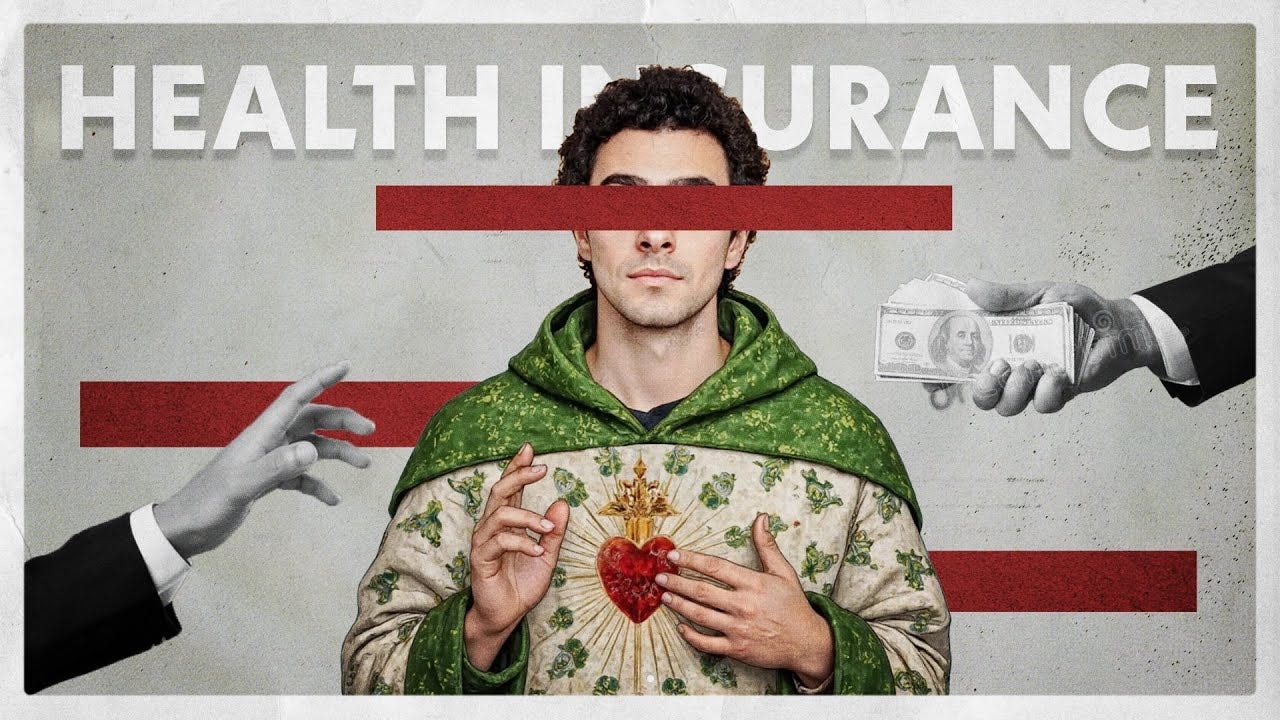From denied claims to AI-powered rejection systems, the privatization of healthcare isn’t just bankrupting Americans—it’s killing them.
1. The Murder That Exposed a Rotten System
• On December 4, 2024, UnitedHealthcare CEO Brian Thompson was shot and killed outside the New York Hilton Midtown while attending an investors’ meeting. The suspect, 26-year-old Luigi Mangione, was arrested days later and charged with first-degree murder and terrorism (AP News).
• But the most shocking part? People celebrated.
• Thousands on social media cheered the assassination, calling it “karma” and “justice”—a reaction that, while disturbing, signals deep public rage at the U.S. healthcare system.
• Moral implications: Is this just misplaced anger, or a sign of something deeper?
• The bigger picture: This isn’t just about one CEO—it’s about a system that is killing people every day through denied care and medical bankruptcies.
⸻
2. The Brutal Cost of American Healthcare
• A real-life case: A $6,000 bill for a basic, uncomplicated birth—a perfect example of the outrageous cost of healthcare, even with insurance.
• The numbers don’t lie:
• $4 trillion spent on healthcare annually (The Times).
• 66.5% of bankruptcies are tied to medical issues (PMC).
• One-third of all GoFundMe campaigns are just Americans begging for help with medical expenses (Health System Tracker).
• The paradox: We have high insurance coverage rates, yet people still go bankrupt—why? Because insurance doesn’t actually cover enough.
⸻
3. The Denial Machine: How Insurance Companies Kill for Profit
• The Numbers:
• Cigna denied over 300,000 claims in two months, averaging a decision every 1.2 seconds (The Guardian).
• UnitedHealthcare faces a class-action lawsuit alleging misuse of AI to deny claims (WBUR).
• How the scam works:
• AI systems auto-deny claims, assuming patients won’t appeal.
• If they appeal, the system delays payments until they give up.
• If they persist, insurance companies fight them in court, bankrupting them further.
• Real-world consequences:
• How many die because of denied care?
• The unseen death toll: lack of coverage, unaffordable prescriptions, delayed treatments.
⸻
4. The McKinsey Playbook: How Wall Street Engineered the System to Fail
• The 1990s shift: Insurance wasn’t always this bad—what changed?
• The Role of Hurricane Andrew (1992):
• Hurricane Andrew caused over $16 billion in insured losses, leading to mass bankruptcies in the insurance industry.
• However, it wasn’t the sole reason for the shift to for-profit models—it accelerated an already underway trend caused by Wall Street pressure and the 1988-2000 soft market cycle.
• McKinsey’s Influence:
• Colossus AI was the prototype for today’s automated claim denials—first used for auto insurance, then expanded to healthcare.
• McKinsey trained insurers to use “delay, deny, defend” as a profit-maximizing strategy.
• Mergers and Acquisitions:
• The rise of the oligopoly: Fewer choices, worse coverage.
• Corporate consolidation killed competition, locking Americans into a system designed to bleed them dry.
⸻
5. The Global Perspective: No Other Country Lives Like This
• Medical bankruptcy doesn’t exist anywhere else (PMC).
• Wait times are NOT worse in other countries (debunking the common myth).
• Direct comparisons:
• 4% of Americans wait 4+ months for surgery vs. 0% in Germany/France.
• Doctors in Sweden/Australia report half the patient struggles compared to US doctors.
• The U.S. has worse life expectancy than many poorer countries, including Cuba (The Times).
⸻
6. The “Fixes” That Weren’t: Why Obamacare Didn’t Solve the Problem
• The ACA helped, but it was designed to keep private profits intact.
• Medicare Advantage became a way for private insurers to milk public funds while offering worse coverage.
• Both parties take massive insurance industry donations, ensuring the system never changes.
⸻
7. A Better System Is Possible
• Medicare for All:
• $450 billion saved annually if we cut out private profits (PMC).
• Tens of thousands of lives saved.
• Lower premiums, reduced costs, fewer bankruptcies.
⸻
8. The Real Violence: Not a Murder, But the System Itself
• The outrage over Brian Thompson’s murder is misplaced.
• Millions suffer & die unnoticed—the real “violence” is hospitals turning away patients, insurance denials, and medical bankruptcies.
• Capitalism’s brutality isn’t a glitch—it’s the system working as intended.
⸻
9. The Fight for a Future Without Medical Debt and Denied Care
The health insurance industry isn’t invincible—it’s just deeply entrenched. But all systems that put profit over people eventually collapse. The question is:
How much longer are we willing to wait?
⸻
What Can You Do?
✔ Join healthcare advocacy groups – Physicians for a National Health Program (PNHP) and National Nurses United (NNU) are leading the fight for change.
✔ Support labor strikes and union actions – Unions are some of the strongest forces pushing for better healthcare access.
✔ Vote accordingly – Follow the money. If a candidate is bankrolled by the insurance industry, they are not on your side.
It’s time to demand a system that puts patients over profits





McKinsey influence seems to be a significant part of the tipping point. Thanks for sharing this.